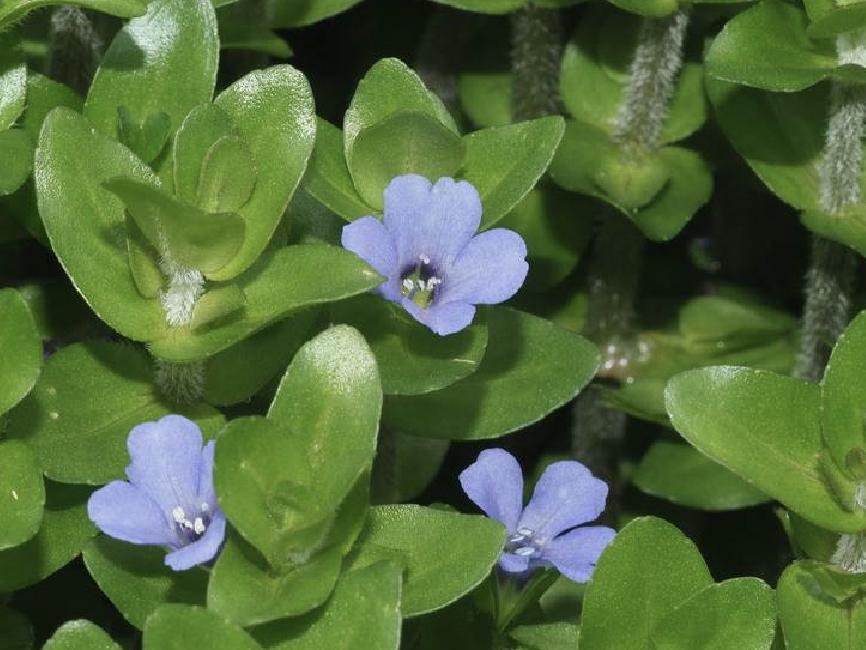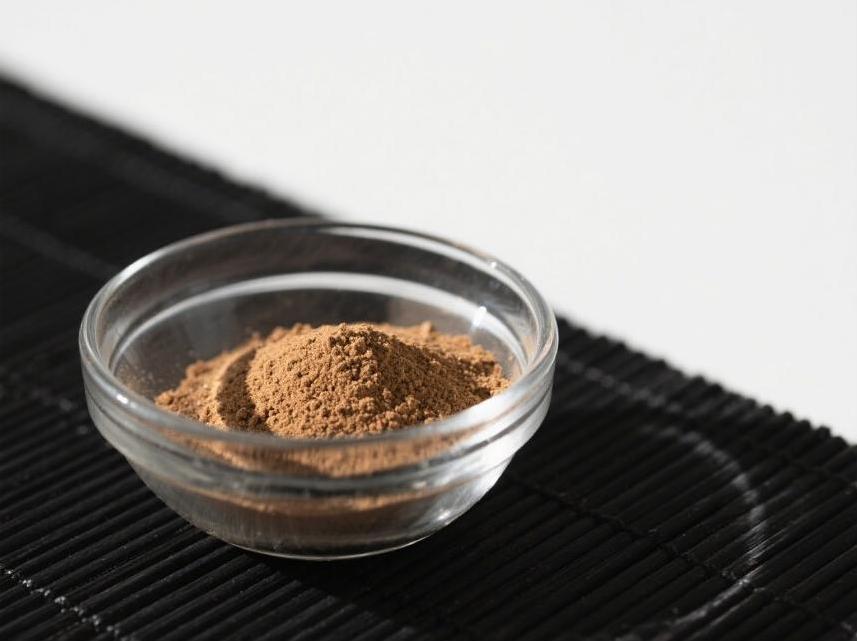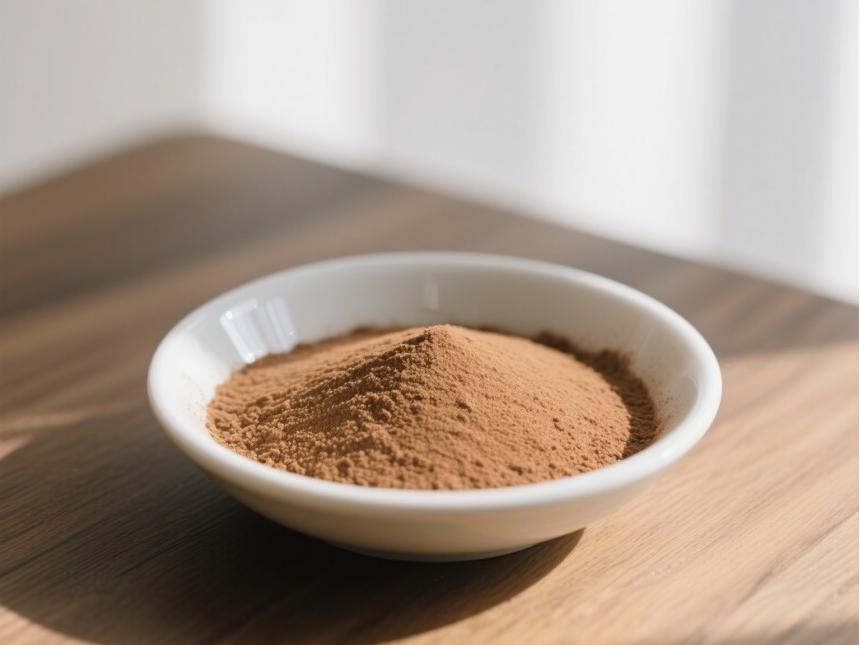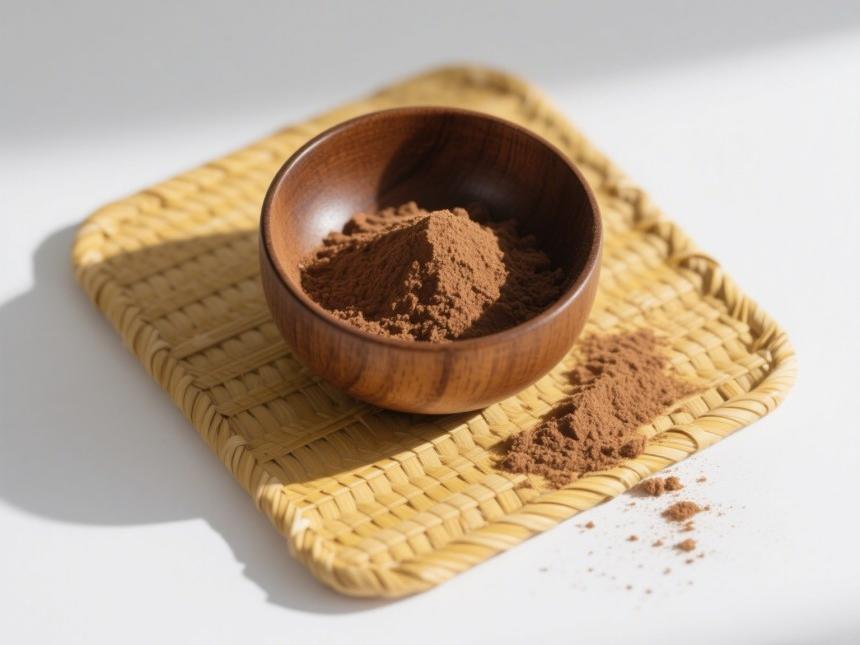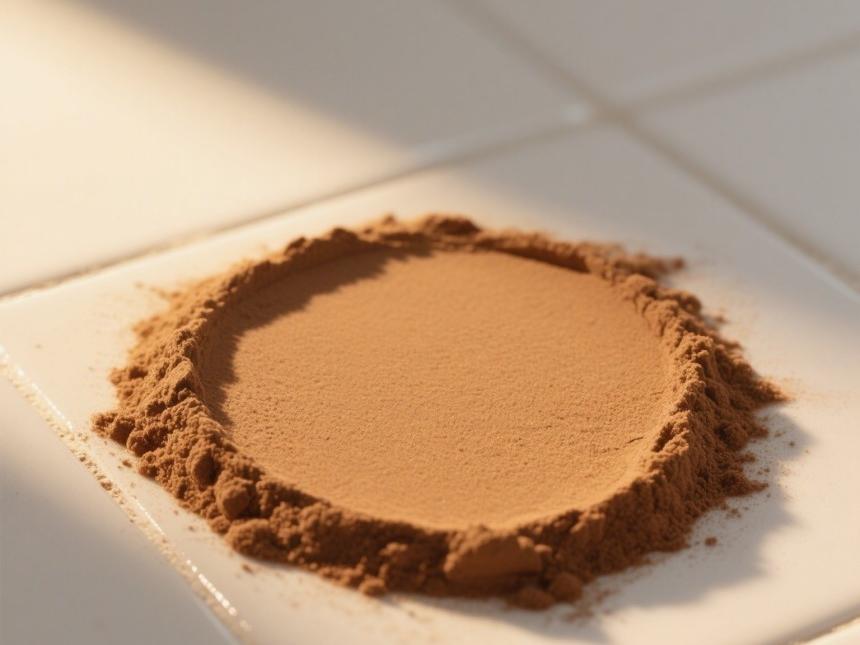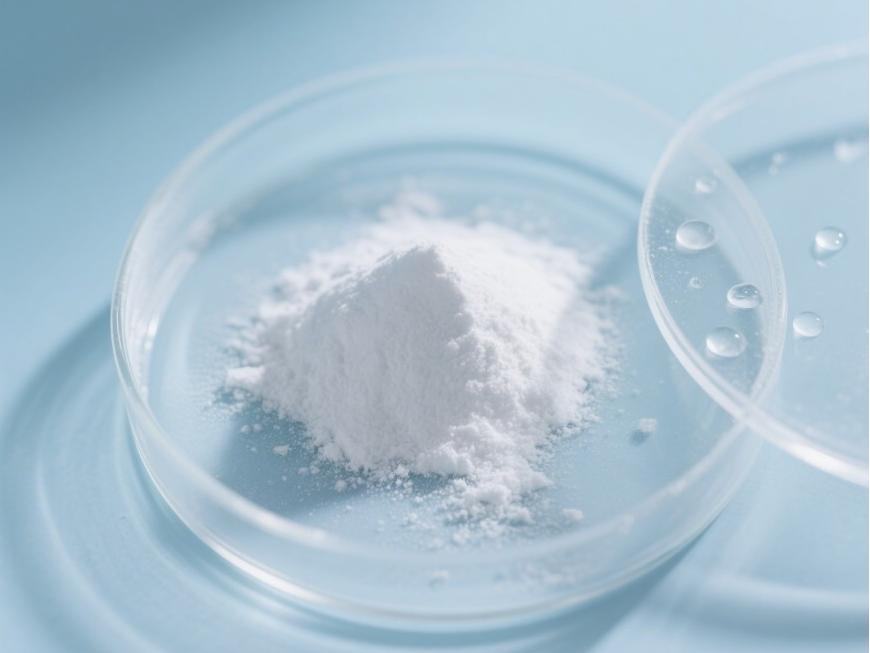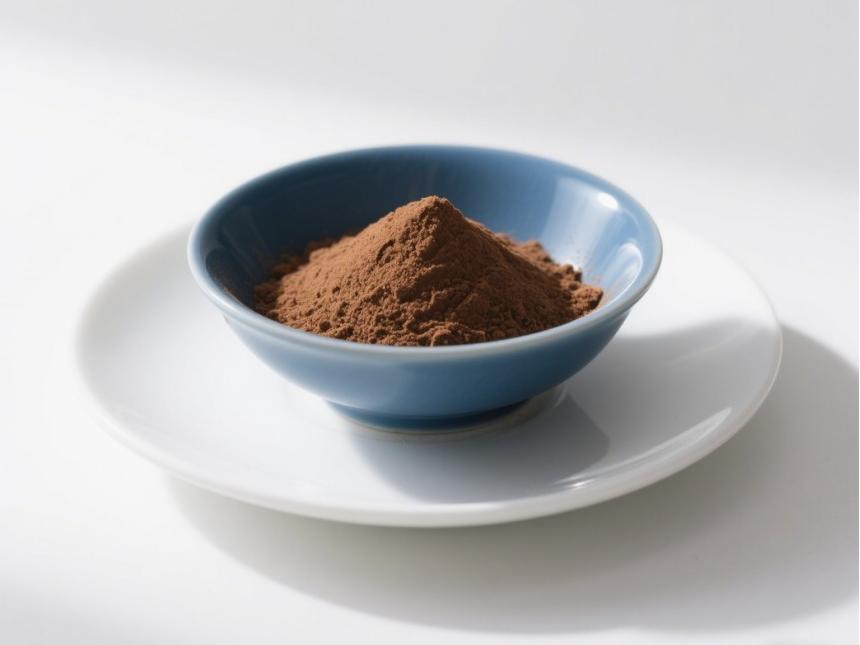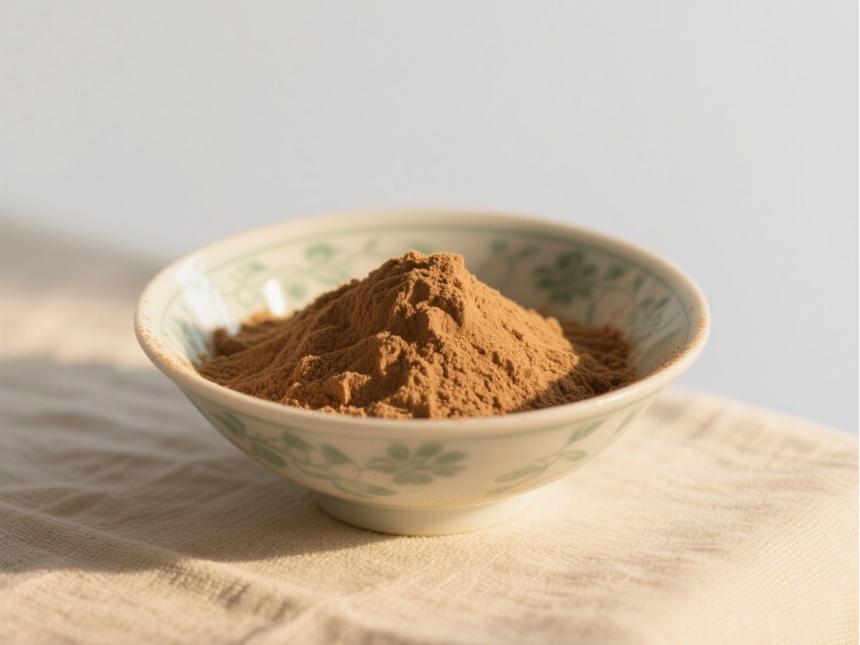What Is the Medcine Uses of Bacopa Monnieri?
Intelligence declines significantly with age, and factors such as emotional stress responses further exacerbate this decline. To alleviate mental disorders and slow down neurodegenerative processes, medicinal plants are selected to develop cognitive-enhancing drugs. In India, Bacopa monniera (BM) has been used for over 3,000 years to nourish the brain, improve memory, and enhance cognitive function, such as anxiety, cognitive impairment, and lack of concentration. It is currently used to treat mental disorders and epilepsy. India has established chemical standards for Bacopa monniera extracts for clinical use.
Bacopa monniera is a plant belonging to the Scrophulariaceae family, primarily distributed in Fujian, Taiwan, Guangdong, Yunnan, and Sichuan provinces in China. The main chemical components isolated from Bacopa monniera ethanol extracts are dammarane-type triterpenoid saponins with jujubogenin and pseudojujubogenin as aglycones. The primary chemical components responsible for Bacopa monnieri's memory-enhancing effects are Bacopa saponins A and B (bacosides A and B). Their most important functions include improving cognitive and memory functions, as well as exhibiting sedative, anxiolytic, anticonvulsant, and antiepileptic biological activities. Additionally, they exhibit anti-inflammatory, analgesic, antipyretic, and cardiotonic activities. Bacoside B is the dextrorotatory isomer, while bacoside A is the levorotatory isomer.
1 Neuropharmacological Activities
1.1 Beneficial Effects on Learning and Memory
Extensive neuropharmacological studies on bacopa monnieri saponins have confirmed that bacopa monnieri and its extracts possess brain-enhancing effects. bacopa monnieri and its ethanol extracts significantly improve learning ability in rats, with the cognitive-enhancing effects primarily attributed to bacopa monnieri saponins A and B in the ethanol extract. In addition to promoting normal learning and memory functions in rats, the active components can also inhibit amnesia (memory loss) induced by scopolamine, electroconvulsive shock, and restraint stress [1]. The pharmacological mechanisms of the active components remain unclear, but some studies suggest that bacopa monnieri saponins can induce dephosphorylation of cell membranes while increasing the turnover of specific proteins and RNA in certain brain regions, and increasing the activity of hippocampal protein kinases, which may be related to its brain-enhancing effects. Oral administration of a standard extract of Bacopa Monnieri rich in Bacopa Monnieri saponins to rats for two weeks can reverse cognitive deficits induced by intracerebroventricular injection of colchicine and basal ganglia nucleus injection of amatoxin.
It is generally believed that the central cholinergic system is the most important neurotransmitter regulating cognitive function, and the loss of hippocampal cholinergic neurons is a primary characteristic of Alzheimer's disease. Therefore, using anticholinesterase drugs to enhance central cholinergic neural activity is the primary pharmacological approach for treating AD-related dementia. Acetylcholine administration for two weeks can reverse the loss of acetylcholine caused by neurotoxins such as colchicine, reduce acetylcholinesterase activity, and decrease binding between muscarinic receptors and the frontal cortex and hippocampus.
There are also reports [2] that behavioral abnormalities caused by cholinergic dysfunction can be alleviated by reducing adrenergic neural function. Pseudoginseng can reduce norepinephrine levels in the hippocampus, hypothalamus, and cerebral cortex, and increase serotonin levels; pseudoginseng can also indirectly regulate A ch concentrations by influencing other neurotransmitter systems.
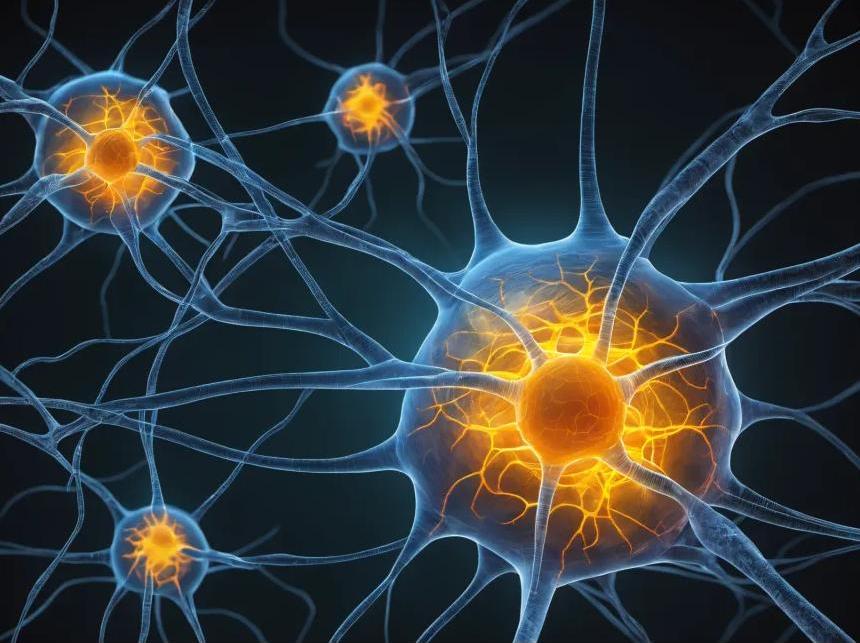
A recent study evaluated the anti-dementia and anti-cholinesterase activities of standard extracts of Pseudo-piparrea and Ginkgo biloba (GB) in adult male Swiss mice [3]. Passive avoidance tests were used to induce functional deficits in mice with scopolamine (3 mg/kg, i.p.) to study their anti-dementia effects. Three extracts of P. pilosa were administered daily at doses of 30 mg/kg P. pilosa and 15, 30, and 60 mg/kg GB for 7 consecutive days, with the final dose administered 60 minutes after scopolamine administration. and the learning and memory functions were evaluated using the latency to turn (TLT) and the number of times without avoidance response (NTR) as criteria. Both the Bacopa Monnieri and GB-treated groups significantly prolonged TLT and increased NTR, thereby alleviating dementia symptoms. In vitro, all extracts inhibited acetylcholinesterase (AchE) activity in a dose-dependent manner; however, the inhibitory effect of the Bacopa Monnieri extract was below 50%, suggesting that GB and Bacopa Monnieri extracts, although both have strong cognitive-enhancing effects, act through different mechanisms.
1.2 Anxiolytic effects
Bacopa Monnieri extract differs from benzodiazepine anxiolytics in that the former enhances cognitive function while producing anxiolytic effects, whereas the latter has side effects that may induce dementia. Using a rat anti-anxiety experimental model (high-cross maze model), the anti-anxiety effects of standard extracts of P. falcatum and benzodiazepines were compared. Rats were orally administered 5, 10, and 20 mg/kg of Bacopa Monnieri extract and intraperitoneally injected with lorazepam (LZP) at 0.5 mg/kg. Compared with lorazepam, high-dose Bacopa Monnieri extract exhibited stronger anxiolytic effects and was significantly superior to LZP. Bacopa Monnieri not only does not cause dementia, but also enhances memory function in animals and humans with dementia. The anxiolytic effects of Bacopa Monnieri extract were also confirmed by Shanker and Singh [4].
1.3 Antidepressant effects
The methanol standard extract of Bacopa Monnieri exhibited strong antidepressant effects in rodent depression models. When compared with the antidepressant imipramine (15 mg/kg), administering Bacopa Monnieri at 20 or 40 mg/kg once daily for five consecutive days in forced swimming and acquired helplessness depression models produced significant antidepressant effects [5].
1.4 Anticonvulsant effects
Numerous experimental studies have confirmed that Bacopa Monnieri possesses anticonvulsant effects, and its water extracts can control epileptic seizures in experimental animals. Mice and rats were administered 1–30 mg/kg of false pennyroyal orally, and the effects on central nervous system functions such as pentobarbital-induced hypnosis, motor coordination, tail withdrawal reaction time, electroconvulsive therapy, chemical convulsions, fluphenazine-induced tonic coma, and conditioned avoidance reflexes were studied. Pseudopulsatilla has sedative effects, significantly prolonging the hypnotic time of pentobarbital and blocking various conditioned avoidance reflexes. Its protective effects against noxious stimuli, as well as its protective effects against electroconvulsive epilepsy and chemical convulsions, can antagonize the tonic convulsive coma induced by haloperidol. suggesting that the regulatory effects of Bacopa Monnieri on the central nervous system are related to the GABAergic nervous system, as activation of GABAergic neurons can produce anticonvulsant, analgesic, and sedative effects [4].
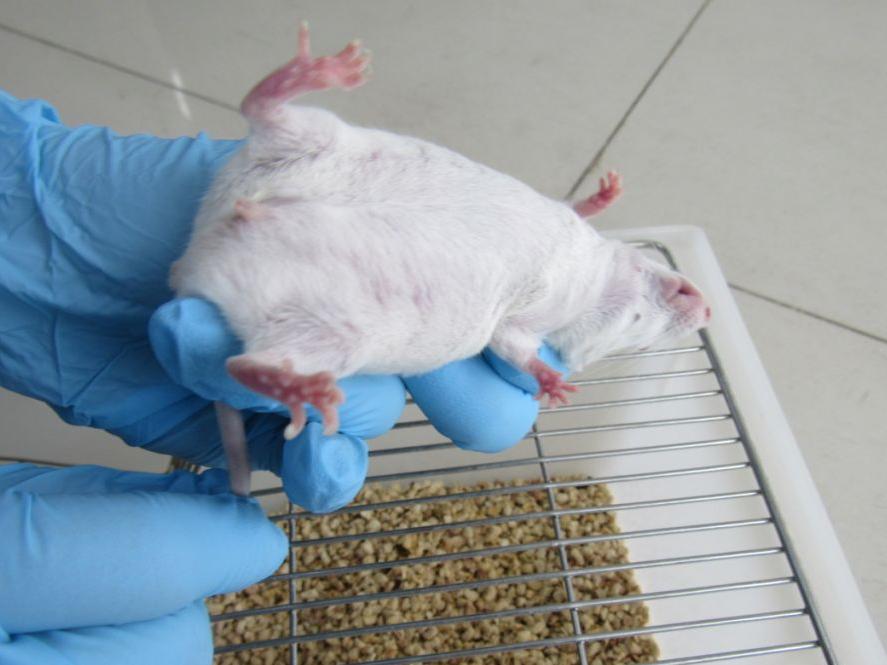
Bacopa Monnieri, when used alone or in combination with phenytoin (an anticonvulsant that causes cognitive dysfunction), was evaluated using mouse passive avoidance experiments, maximum electric shock-induced seizure frequency, and motor function. The results showed that phenytoin impaired cognitive function, while Bacopa Monnieri reversed the cognitive impairment caused by phenytoin, significantly improving memory acquisition and retention, but did not affect the anticonvulsant effects of phenytoin; single use of Pseudocontortum or in combination with other antiepileptic drugs also confirmed that Pseudocontortum has strong antiepileptic effects and can correct the damage caused by antiepileptic drugs to cognitive function [6].
2 Antioxidant effects
Results from different laboratories indicate that the cognitive-enhancing effects of Bacopa Monnieri may be partially attributed to its antioxidant activity. The effects of Polygonum cuspidatum ethanol and hexane extracts on lipid peroxidation in rat liver homogenates induced by ferrous sulfate and hydrogen peroxide were investigated. The results showed that Polygonum cuspidatum ethanol extract exhibited significant protective effects against oxidative stress induced by both oxidative stress inducers. when compared to known antioxidants such as 3-(2-amino-2-hydroxy-1,3-propanediol), EDTA, and vitamin E (100 mg of Bacopa Monnieri ethanol extract is equivalent to 247 mg of EDTA and 58 mg of vitamin E). The protective effects of EDTA and vitamin E against the peroxidation reaction induced by ferrous sulfate were dose-dependent, while the protective effect of Bacopa Monnieri extract against the oxidation of reduced glutathione was weak, suggesting that the antioxidant mechanism of Bacopa Monnieri extract may involve scavenging free radicals during the initial chain reaction stage or through metal chelation during the chain growth process.
Compared with the neuroprotective agent depredyl, administration of Bacopa Monnieri extract at 7, 14, and 21 days examined the effects of Bacopa Monnieri on the activity of superoxide dismutase (SOD), catalase (CAT), and glutathione peroxidase (GPX) in the prefrontal cortex, striatum, and hippocampus of rats [7]. The results showed that after 14 or 21 days of administration, the activities of SOD, CAT, and GPX in all brain regions increased in a dose-dependent manner; however, after 12 or 21 days of administration of selegiline, the activities of SOD, CAT, and GPX increased only in the frontal cortex and striatum, with no effect on the activities of these enzymes in the hippocampus. Pawar et al. used the nitro blue tetrazolium assay to determine that the water-ethanol extract of the whole plant of Pseudocallis had a significant inhibitory effect on the release of superoxide by polymorphonuclear cells, with the active component being Bacopa Monnieri saponin A3 [8].
Sumathy et al. investigated the antioxidant and liver-protective effects of oral administration of Bacopa Monnieri ethanol extract on morphine-treated rats. The combination of morphine and Polygonum aviculare could counteract the decrease in antioxidant enzyme activity and GSH levels in rats [9]. Additionally, Bacopa Monnieri can inhibit morphine-induced lipid peroxidation, thereby protecting the liver from morphine-induced hepatotoxicity. Recent studies have shown that Bacopa Monnieri extract has a protective effect on the reduced activity of mitochondrial enzymes in the brains of morphine-treated rats [10].
To verify the direct role of Bacopa Monnieri in reducing free radical production, the Paoletti assay (excluding Fenton-type reactions and the xanthine-xanthine oxidase system) was employed. The results showed that Bacopa Monnieri directly inhibits the production of superoxide anions in a dose-dependent manner. The ability of Bacopa Monnieri methanol extract to scavenge free radicals was evaluated by assessing its ability to quench 1,1-diphenyl-2-picrylhydrazyl (DPPH) radicals. The protective effect of Pseudocorydalis against plasmid DNA strand breaks caused by ·OH radicals generated by UV-induced H₂O₂ decomposition further confirmed the free radical scavenging capacity of Pseudocorydalis. In fact, Pseudocorydalis methanol extract can inhibit linDNA formation and partially restore scDNA. Therefore, this extract demonstrated significant protective effects against the cytotoxicity and DNA damage induced by H₂O₂ in human non-dividing fibroblasts [11].
Increasing evidence suggests that high concentrations of NO (produced via enzymatic and non-enzymatic pathways) generated by activated astrocytes are associated with various neurodegenerative diseases such as Alzheimer's disease (AD), ischemia, and epilepsy [12]. The methanol extract of Pseudocallophyllum was evaluated for its effects on the cytotoxic effects of the NO donor S-nitroso-N-acetylpenicillanide (SNAP) in cultured rat astrocytes. The results, as demonstrated by the oxidative markers 2′,7′-dichlorodihydrofluorescein diethyl ester, Compared with the control group, treatment with SNAP for 18 hours significantly increased intracellular oxidative stress levels and induced genomic DNA fragmentation (assessed using the COMET assay). Adding Polygonum cuspidatum methanol extract (3–6–12 g/mL) to SNAP-treated cells reduced oxidative stress levels and prevented DNA damage [13].
3 Other bioactive properties
In addition to its mental effects, the anti-inflammatory, cardiotonic, and other pharmacological effects of Pseudocallium extract or its preparations were evaluated. The anti-inflammatory effects of Bacopa Monnieri were compared with those of the anti-inflammatory drug indomethacin. The results showed that Bacopa Monnieri effectively inhibited experimental inflammatory responses by inhibiting prostaglandin synthesis and partially stabilizing lysosomal membranes. At anti-inflammatory doses, Bacopa Monnieri did not cause gastrointestinal irritation. Pseudocentaurea extract can cure various types of inflammation [14].
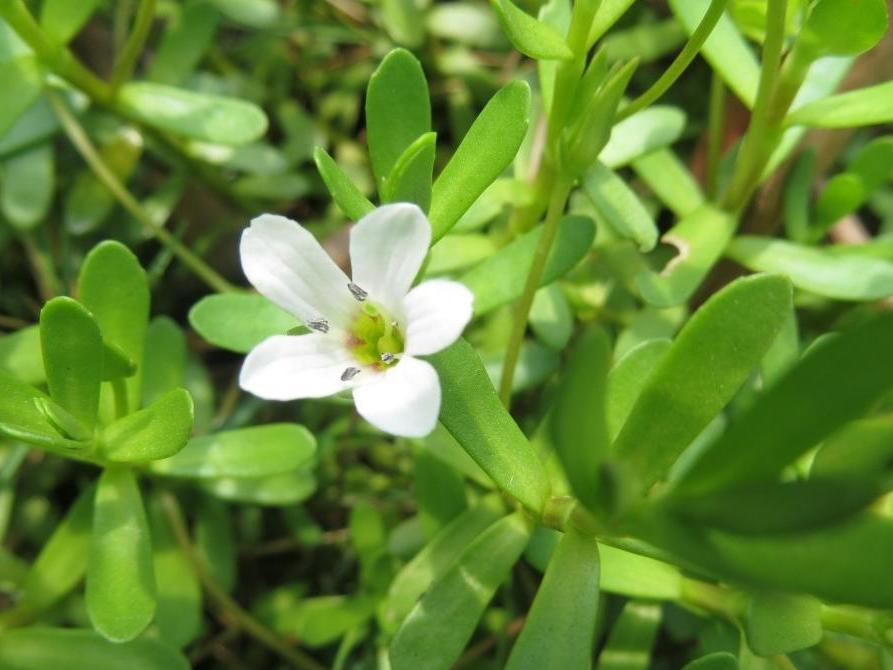
It has been reported that fresh Bacopa Monnieri juice (Bacopa Monnieri J) has significant anti-ulcer effects [13]. The anti-ulcer effects of Pseudocentaurea J were investigated in a gastric ulcer model induced by aspirin, aspirin, 2-hour cold restraint stress, and 4-hour pyloric ligation-induced gastric ulcer models, the anti-ulcer effects of Bacopa Monnieri J were examined. At 100 mg/kg, Bacopa Monnieri J had no effect on the ethanol-induced ulcer model, but at 100–300 mg/kg, Bacopa MonnieriJ showed significant anti-ulcer effects on almost all ulcer models. J. J. (100–300 mg/kg) had little effect on gastric acid-pepsin secretion. Based on the total carbohydrate to protein ratio (TC:P), two important defensive parameters showed significant reductions in cell detachment and a marked increase in mucin secretion, indicating that Bacopa Monnieri can enhance the protective role of mucus. According to the TC:P ratio, Bacopa Monnieri J (300 mg/kg) and sucralphate, the reference control, increased mucosal glycoprotein secretion. Therefore, the anti-ulcer effect of Bacopa Monnieri J may act by influencing mucosal defense factors, increasing mucin and mucosal glycoprotein secretion, and reducing cell detachment, while having almost no effect on the secretion of aggressive factors such as gastric acid and pepsin.
However, Sairam et al. administered 10–50 mg/kg of Psoralea corylifolia E (standardized Psoralea corylifolia A) twice daily for 5 days, and all gastric ulcer models showed dose-dependent anti-ulcer effects [15]. 20 mg/kg of Psoralea corylifolia E did not affect gastric acid-pepsin secretion but increased mucin secretion, reduced cell detachment, and did not affect cell proliferation. It has been reported that Bacopa Monnieri E effectively alleviates stress-induced ulcers, significantly reduces lipid peroxidation (LPO), and increases superoxide dismutase (SOD) and catalase (CAT) activity. Goel et al. reported that a 1000 g/mL standard extract of Bacopa Monnieri had anti-Helicobacter pylori activity in vitro [16].
Since stress responses have significant impacts on various diseases, Rai et al. evaluated the anti-stress effects of Pseudanthias standard extract using acute (AS) and chronic (CS) stress models in rats. Pre-oral administration of 40 mg/kg Pseudanthias significantly reduced adrenal and spleen weights induced by AS stress, lowered blood glucose, alanine aminotransferase (ALT), aspartate aminotransferase (AST) levels; in CS stress, it significantly increased ulcer index, adrenal weight, plasma AST, and creatine kinase (CK) levels, while reducing thymus and spleen weights, plasma triglyceride, and cholesterol levels [17]. Pre-treatment with a low dose of Bacopa Monnieri extract (40 mg/kg) can only reverse changes in ulcer index and plasma AST, while a high dose of Pseudoginger can reverse changes in ulcer index, adrenal weight, CK, and AST induced by CS stress, suggesting that the standard extract of Bacopa Monnieri possesses adaptogenic activity.
D ar and C hanna reported that the vasodilatory and bronchodilatory effects of Bacopa Monnieri on rabbits and guinea pigs are partially due to its action on β-adrenergic receptors and prostaglandins. The bronchodilatory effect of Bacopa Monnieri on anesthetized rats provides evidence for its traditional use in treating respiratory system diseases. The bronchodilatory effect of E. pseudogalica on the bronchi is clearly due to its bronchodilatory action and antagonism against the effects of acetylcholine on inspiratory and expiratory pressure. Additionally, at doses of 37–50 mg/kg, the extract can also inhibit the blood pressure-lowering effect induced by acetylcholine. Pseudoparadistichium has a dual effect on acetylcholine-induced bronchoconstriction: at low doses (25 and 37 mg/kg), it primarily inhibits inspiratory pressure, while at high doses (50 mg/kg), it only inhibits expiratory pressure. These results suggest that multiple mechanisms (including activation of β-adrenergic receptors, antagonism of M receptors, prostaglandin release, and interference with cellular Ca²⁺ homeostasis, etc.) are involved in the bronchodilatory effect of Pseudocontortum [18].
Recent studies have confirmed that the ethanol extract of Bacopa Monnieri heterophylla also exhibits Ca²⁺ antagonistic effects. The extract inhibits spontaneous peristalsis in guinea pig ileum [IC₅₀ = (24 ± 4) g/mL] and rabbit jejunum [IC₅₀ = (136 ± 9) g/mL]. At a concentration of 260 g/mL, Bacopa Monnieri significantly reduces acetylcholine and histamine-induced ileal responses, and dose-dependently inhibit 1 mM acetylcholine-induced ileal contractions. At concentrations of 10–700 g/mL, Pseudocontortum extract reduces CaCl₂-induced vascular and jejunal responses in rabbits, suggesting that Pseudocontortum extract directly acts on intracellular Ca²⁺ influx, but does not affect the contractile responses induced by norepinephrine and caffeine, indicating that the extract has no effect on intracellular Ca²⁺ homeostasis. Therefore, it is inferred that the antispasmodic effect of the extract on smooth muscle primarily inhibits Ca²⁺ influx through voltage-dependent and receptor-mediated Ca²⁺ channels in the cell membrane. Channa demonstrated that various fractions isolated from Bacopa Monnieri significantly inhibited acetylcholine-induced bronchoconstriction, hypotension, and bradycardia in anesthetized rats [19]. The methanol extract and CHCl₃/MeOH extract of Bacopa Monnieri can attenuate CaCl₂-induced contractions of guinea pig ileum, indicating that the extract can interfere with Ca²⁺ movement.
Additionally, reports indicate that compared to sodium cromoglycate, the methanol extract of Pseudocorydalis is a more potent mast cell stabilizer [20], suggesting that Bacopa Monnieri has significant potential for the treatment of allergic reactions.
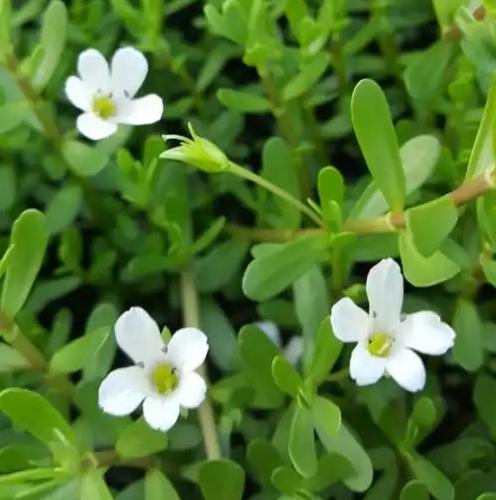
4 Clinical Studies
A summary of preclinical and clinical studies on Bacopa Monnieri is presented in Table 1. Two single-blind open-label clinical trials showed that long-term use of Bacopa Monnieri improved learning and memory functions in patients with anxiety disorders and children. In India and other countries, Bacopa Monnieri is used as a single herb or in compound formulations to treat memory loss and attention disorders, particularly for cognitive enhancement in young adults. India has completed volunteer clinical trials and is using standardized Bacopa Monnieri extracts in clinical settings.
Stough et al. conducted placebo-controlled, double-blind trials and a series of recognized neuropsychological tests to evaluate the long-term effects of bacopa monnieri extract on cognitive function in healthy subjects. The results showed that 300 mg of bacopa monnieri administered over 12 weeks improved early information processing, language learning, and memory consolidation [23]. However, studies on GB extract showed that short-term administration of low doses of GB (300 mg), even when combined with St. John's wort, had no beneficial effect on cognitive function [26]. Therefore, the authors suggest that long-term combined use of GB and St. John's wort may have a stronger effect on improving cognitive function.
Based on the results of behavioral studies in rats, Roodenry et al. [27] investigated the effects of false pennyroyal extract on cognitive function. A randomized, placebo-controlled, double-blind trial involving 76 adults aged 40–65 years was conducted, and various memory function and anxiety level tests were administered. The results showed that Bacopa Monnieri significantly improved the retention of new information; follow-up studies indicated that Bacopa Monnieri extract had no effect on learning rate, suggesting that it reduces the rate of forgetting after acquiring new knowledge. It also had no effect on attention, language, and visual short-term memory, as well as the ability to recall knowledge prior to the experiment. Questionnaire surveys indicated that Bacopa Monnieri extract had no effect on daily memory function or anxiety levels.
5 Toxicological studies
General pharmacology and toxicology studies showed that Bacopa Monnieri has good tolerability and no adverse reactions or side effects were observed. When administered intraperitoneally to rats, the water or ethanol extracts of Bacopa Monnieri had LD50 values of 1000 mg and 15 g/kg, respectively. Oral administration of 5 g/kg of the water extract did not induce toxic reactions, and the LD50 of the ethanol extract was 17 g/kg.
To investigate the pharmacological safety dose of Bacopa Monnieri saponins in healthy adult male volunteers, a Phase I single-dose tolerance study (placebo-controlled, double-blind, non-crossed trial) was conducted on 31 healthy subjects. The doses of Bacopa Monnieri saponins A and B were 20–30 mg. with 6 subjects in the placebo group, 4 subjects in each of the 20, 50, 75, 150, and 200 mg groups, and 1 subject in the 300 mg group. Twenty subjects completed the multiple-dose study, with 10 subjects receiving 100 mg of bacopa monnieri saponins A and B orally daily, for 4 consecutive weeks, while the remaining 10 subjects received 200 mg of bacopa monnieri saponins A and B. Clinical, hematological, and biochemical tests conducted before and after administration showed no abnormal changes. The subjects demonstrated good tolerability to single and repeated doses of bacopa monnieri saponins A and B or placebo, with no adverse reactions reported.
6 Conclusions
Bacopa Monnieri has traditionally been used to enhance memory, sedation, anticonvulsant, anti-inflammatory, antipyretic, and analgesic effects. Recent preclinical studies have confirmed that various extracts of Bacopa Monnieri have cognitive-enhancing effects, but the exact mechanisms of action remain unclear. Recent reports also suggest that bacopa monnieri saponins A can prevent smoking-related harm [28-31]. Like GB, the neuroprotective effects of Pseudogastrodia and its improvement of cognitive function are partially due to its ability to regulate the cholinergic system and its antioxidant stress effects. Although Pseudogastrodia has brain-enhancing effects similar to GB, clinical trials are limited. Reports indicate that long-term administration of Bacopa Monnieri can improve early information processing, language learning, and memory consolidation in humans. However, short-term use, even at low doses, of bacopa monnieri combined with GB does not improve cognitive function. Therefore, long-term combined use of the two extracts may more effectively enhance and improve cognitive function. Clinical researchers need to conduct further studies on bacopa monnieri to investigate potential side effects. Many studies have shown that interactions between traditional Chinese medicine and synthetic drugs may lead to serious consequences in clinical settings. For example, the combination of GB and thiazide-like drugs can cause blood pressure to rise, and administering GB to AD patients taking low doses of trazodone (trazodone) can lead to coma. Therefore, investigating the interactions between Bacopa Monnieri and other drugs is highly necessary.
Reference
[1]K ishore K,Singh M. E ffect of bacosides,alcoholic extract of B acopa monniera L inn. (brahmi),on experimental amnesia in m ice. Indian J E xp B iol,2005,43:640-645.
[2]Sara SJ. N oradrenerg ic-cholinerg ic in teraction: its possible role in memory dy sfunction associated with senile demen tia. A rch G erontol G eria trSuppl,1989,1:99-108.
[3]D as A,Shanker G,N a th C,et a l. A comparative s tudy in ro- dents of s tandardized extracts of B acopa monniera and G ink- go biloba: an ticholinesterase and cognitive enhancing activi- ties. P harmacol B iochem B ehav,2002,73:893-900.
[4]Shanker G,Singh HK. A nxiolytic p rofile of s tandardized B rahm i extract. Indian J P harmacol. 2000,32:152.
[5]Sairam K,D orababu M,G oel RK,et a l. A n tidep ressant activity of s tandardized extract of B acopa monniera in experimental models ofdep ression in rats. P hytomedicine,2002,9:207-211.
[6]B hattacharya SK,B hattacharya A,K um ar A,et a l. A n tioxi- dan t activity of B acopa monniera in rat fron tal cortex,s tria-tum and hippocampus. P hyto ther R es,2000,14:174-179.
[7]P awar R,G opalakrishnan C,B hutani KK. D ammarane triterpene saponin from B acopa monniera as the superoxide inhibi- tor in polymorphonuclear cells. P lanta M ed,2001,67:752- 754.
[8]Sumathy T,Subramanian S,G ovidasam y S,et a l. P rotective role of B acopa monniera onmorphine induced hepa to toxicity in rats. P hyto ther R es,2001,15,643-645.
[9]Sumathy T,G ovindasam y S,B alakrishna K,et a l. P rotective role of B acopa monniera on morphine-induced brain m ito- chondrial enzym e activity in rats. F ito terap ia,2002,73,381- 385.
[10]R usso A,Izzo AA,B orrelli F,et a l. F ree radical scaveng ing capacity and p rotective effect on DNA damage of B acopa monniera L. . P hyto ther R es,2003,17:870-875.
[11]C olasanti M,Suzuki H. The dual personality of NO. T rends P harmacol Sci,2000,21:249-252.
[12]R usso A,B orrelli F,C am p isi A,et a l. N itric oxide-related toxicity in cultured astrocytes: effect of B acopa monniera. L ife Sci,2003,73:1517-1526.
[13]R ao CHV,Sairam K,G oel RK. E xperimental evaluation of B acopa monniera on ratgastric ulceration and secretion. Indi- an J P hy siol P harmacol,2000,44:435-441.
[14]C hanna S,D ar A,A njum S,et a l. A n ti-inflammatory activity of B acopa monniera in rodents. J Ethnopharm acol. 2006, 104:286-289.
[15]Sairam K,R ao CV,B abu MD,et a l. P rophy lactic an curative effects of B acopa monniera in gastric ulcer models. P hyto- medicine,2001,8:423-430.
[16]G oel RK,Sairam K,B abu MD,et a l. In vitro evaluation of B acopa monniera on anti-H elicobacter pyloriactivity and ac- cumulation of p rostag landins. P hytomedicine,2003,10:523- 527.
[17]R ai D,B hatia G,P alitG,et a l. A daptogenic effect of B acopa monniera(B rahmi). P harmacol B iochem B ehav,2003,75: 823-830.
[18]D ar A, C hanna S. B ronchodilata tory and cardiovascular effects ofethanolextract of B acopa monniera in anaesthetized rats. P hytomedicine,1997,4:319-323.
[19]C hanna S,D ar A,Y aqoob M,et a l. B roncho-vasodilata tory activity of fractions and pure constituen ts isolated from B aco- pa monniera. J Ethnopharmacol,2003,86:27-35.
[20]Sam iulla DS,P rashanth D,Am it A. M ast cell s tabilising activity of B acopa monniera. F ito terap ia,2001,72:284-285.
[21]D ave UP,C hauvan V,D alvi J. E valuation of BR-16A (M en- tal) in cognitive and behaviouraldy sfunction ofmen tally retarded children: a p lacebo-con trolled s tudy. Indian J P edia tr, 1993,60:423-428.
[22]Stough C,L loyd J,D owney AL,et a l. The chronic effects of an extract of (Bacopa monniera B rahmi) on cognitive func- tion in healthy hum an subjects. P sychopharmacology,2001, 156:481-484.
[23]N a than PJ,C larke J,L loyd J,et a l. The acute effect of an ex- tract of B acopa monniera(B rahmi) on cognitive function in healthy normal subjects. H um P sychopharmacol,2001,16: 345-351.
[24]M aher BF,Stough C,Shelmerdine A,et a l. The acute effects of combined adm inistration of G inkgo biloba and B acopa monniera on cognitive function in hum ans. H um P sychophar- macol,2002,17:163-164.
[25]R oodenry s S,B ooth D,B ulzoni S,et a l. C hronic effects of B raham i (Bacopa monnieri) on hum an memory. N europsy- chopharmacology,2002,27:279-281.
[26]M aher BF,Stough C,Shelmerdine A,et a l. The acute effects of combined adm inistration of G inkg o biloba and B acopamonniera on cognitive function in hum ans. H um L P sycho- pharmacol,2002,17:163-164.
[27]R oodenry s S,B ooth D,B ulzoni S,et a l. C hronic effects of B raham i (Bacopamonnieri) on hum an memory. LN europsy- chopharmacology,2002,27:279-281.
[28]A nbarasi K,V ani G,B alakrishna K,et a l. E ffect of bacoside A on brain an tioxidan t s ta tus in cigarette smoke exposed rats. L ife Sciences,2006,78:1378-1384.
[29]A nbarasi K,K a thirvel G,V ani G,et a l. C igarette smoking in- duces heat shock p rotein 70kD a exp ression and apoptosis in rat brain: M odulation by bacoside A. N euroscience,2006, 138:1127-1135.
[30]A nbarasi K,Sabitha KE,Shyamala DCS. L acta te dehydrogen- ase isoenzym e pa tterns upon chronic exposure to cigarette smoke: P rotective effect of bacoside A. E nvironmen tal T oxi- cology and P harmacology,2005,20:345-350.
[31]A nbarasi K,V ani G,B alakrishna K,et a l. C reatine kinase isoenzym e pa tterns upon chronic exposure to cigarette smoke: p rotective effect ofbacoside A. Vascular P harmacolo- gy,2005,42(2):57-61.


 English
English French
French Spanish
Spanish Russian
Russian Korean
Korean Japanese
Japanese